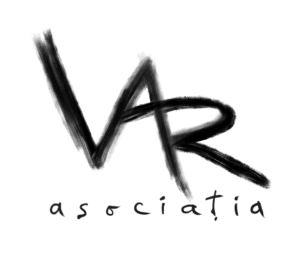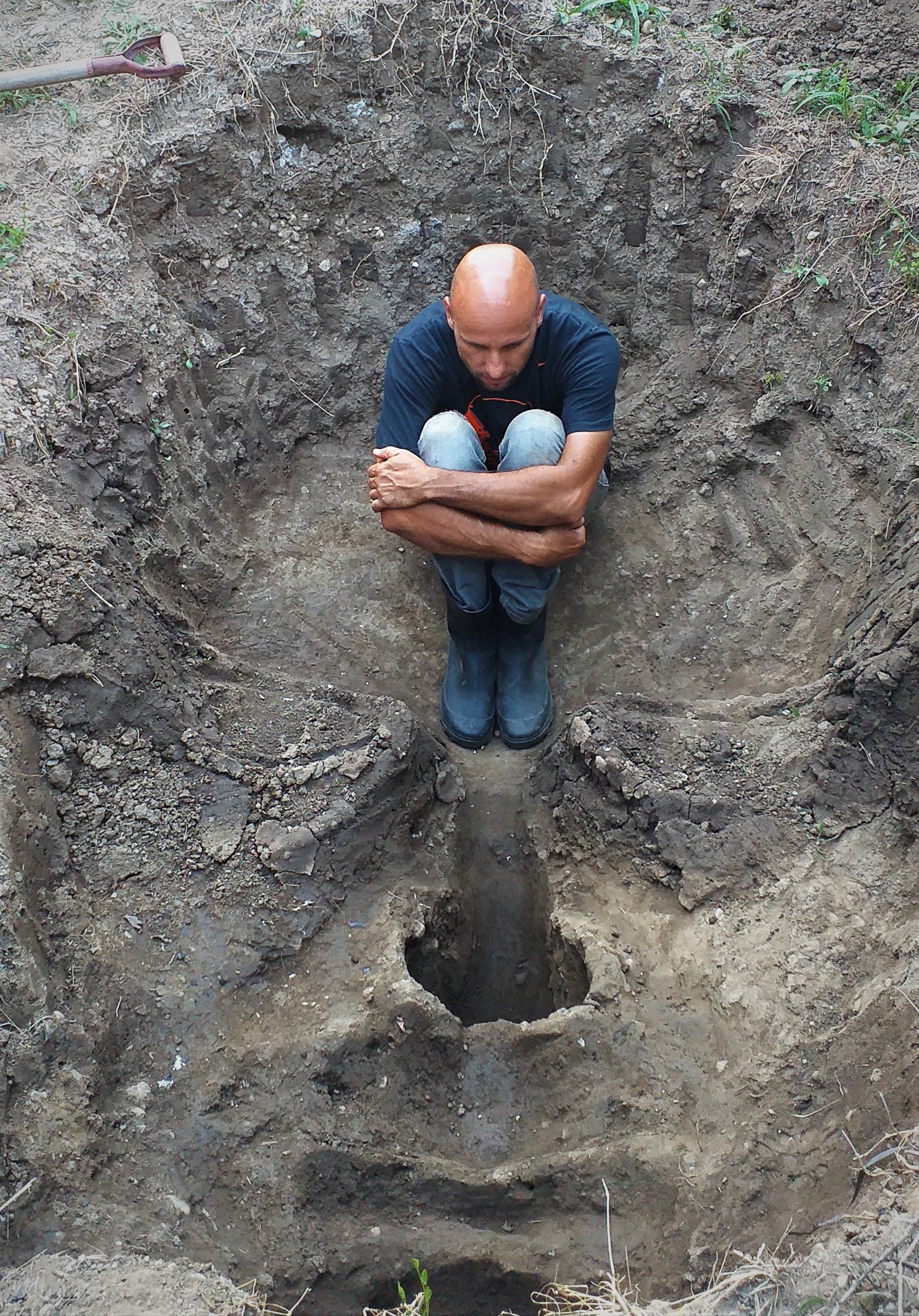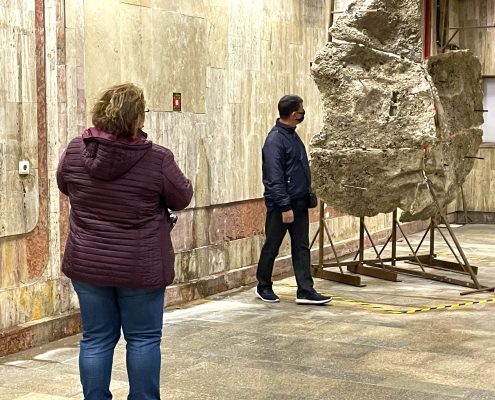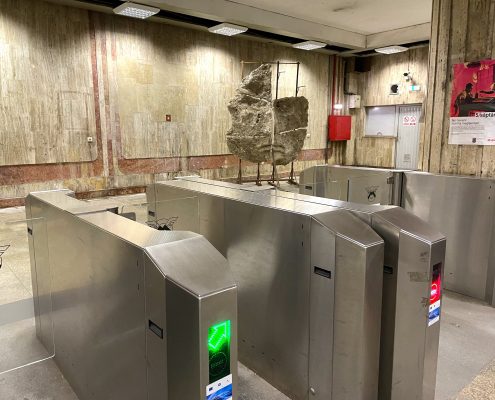Dragoș Neagoe
Born in 1974, Dragos Neagoe graduated from the Faculty of Fine Arts, the sculpture section of the Bucharest University of Arts in 2002, completed studies with a master’s degree in 2004. He is concerned with the multiple possibilities of representing human poses, especially the portrait. He continuously experiments with organic or traditional materials and investigates various forms of visual expression, from sculpture and object to installation, performance, video and newer photography. The experience of several years, as a restorer in the Art Museum of Romania, offered the chance to learn many of the classic and modern working techniques that, most of the time, make their presence felt in all his plastic experiments. His sculpture is the fruit of an unusual technique. The artist calls this procedure “In the Pit”. The technique is “simple”. Dig a hole (small/big, depending on the size of the work) and think that everything that is convex becomes concave and vice versa, what is concave becomes convex. The sculptor sought to see the positive forms in the negative and vice versa.
For several years, he has also been collaborating very well with bees. “The bee has been declared the most important living being on Earth for several years. I hope I don’t see the day when I only see bees at the zoo with a sign that says: insects in danger of extinction!”
Since 2002, Dragoș Neagoe has exhibited and participated in numerous personal and group exhibitions, he has been involved in cultural and educational projects in the village of Crevedia Mare (where he lives), Hațeg and Bucharest, having worked in the public space and in private collections, both in the country as well as abroad.
Technique: digging in the ground, modeled in the negative, cast plaster with trowels, assembly on an iron support
Concept:
Since I was a teenager, I was impressed by the terrifying event experienced by the inhabitants of the city of Pompeii through the brutal eruption of Vesuvius. I looked for albums, read magazines, watched shows with the curiosity to discover new details and/or information about the tragic event. A large part of the people was surrounded by dust and volcanic ash after which the lava came over them, melting them but keeping their prints. In 17 38 when Pompeii was discovered, archaeologists also discovered these voids/prints not initially knowing what they are. They filled them with plaster and thus re-assembled the human figures as they were caught by the eruption of Vesuvius. What impresses me the most is the relationship between the human prints found in the volcanic rock and my working method, the technique through who made my works only making the connection a few years ago.
My art also has this side/coordinate called archaeology! It is a direction in contemporary art, which is found in many artists, which we develop and assimilate in our style. We are aesthetically impressed, like nature through its mechanical processes, physical or chemical transforms/re-shapes the volume and assimilates it into its universe. The form coexists with nature becoming a tree, rock or earth.
Archeology is a Discipline that involves surveying, excavation and finally, a careful analysis of the data collected to learn more about the past. I try to learn more about the present, I try to understand the deep connections between people with identities/religions/ways different from life. The only strong/positive bond that unites us is the feeling of love in all its forms and aspects.
Any patch of land, any geographical location can hide a part of human history. In any excavation you can find an imprint preserved in time, preserved by sand, earth, and lava! This imprint can hide an artefact sculpture/a dwelling/a location of a cult and what gives us precious information about vanished civilizations, their customs and way of living!
Thus I re-create this process of history in the pit, modelling in negative works that have different characters as a whole! The particularities and/or individualities of my portraits come from the composition of the soil I work with; fatter, sandier, harder, blacker or clayey. An important aspect for me is what I discover in my pit, what organic or mineral world is offered to me. The life of insects that I discover there also contributes decisively to the choice of character and shades that I give to my sculpture.
In this portrait, I tried to recreate a spiritual rapprochement between my generation (the 70s) and the young generation (95-2000s). I built an organic, mineral connection to the earth with which I had to collaborate. I had the opportunity to build the shape, structure and size of the pit, appropriating the two cultures on a spiritual level. It is a difficult appropriation because the shades make the difference and my pit becomes the common site of the two identities.
I repeat, love knows how to bring people together, helps them communicate with each other, and knows how to offer, give and inspire. My inspiration comes from love and it becomes my perfect chisel.
*Project realized with the support of Display Grup, Impuls Leasing Romania, AMIQ Consulting, AVONI Lighting, ButanGas, interfața.ro, Respiro Dental




